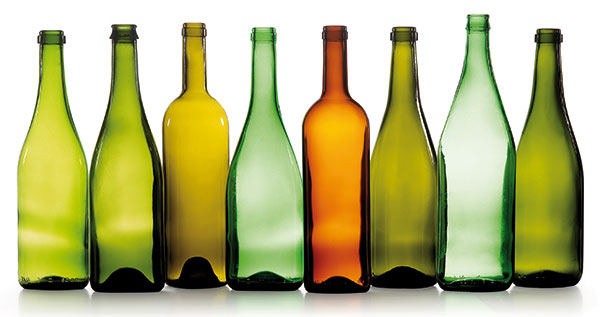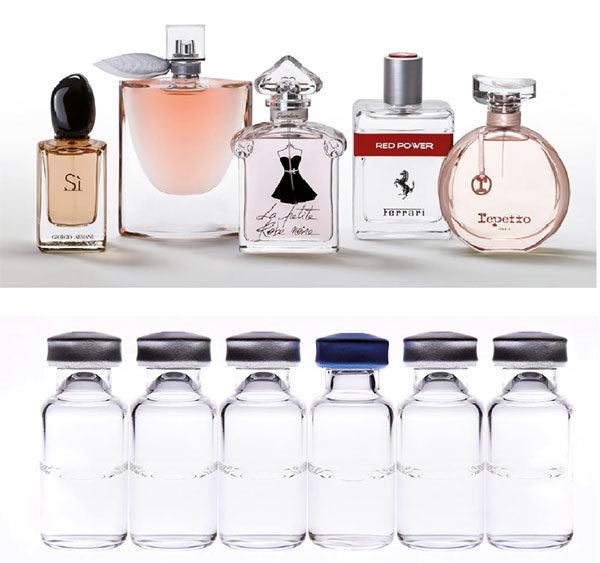Reflections on glass packaging
Data and facts on a historic sector, which is turning to innovation and quality.

Thanks effective communication action, accompanied by conspicuous product innovation, Italian glass producers have managed to reinvent themselves over the years, focusing their efforts on stressing the distinctive features of glass packaging: elegance, transparency, complete recyclability, ample personalization options and guaranteed protection.
In spite of stiff competition from other packaging types – mainly plastic, depending on the sector –, glass has maintained and even improved its position, as shown by the trend of major manufacturers returning to glass packaging.
Production
In 2016, glass packaging production in Italy amounted to 3,936 t/000, representing 3.3% growth. The strong performance is largely attributable to the domestic market, whose +4.9% apparent use amounts to some 4,195 t/000.
A longstanding feature of the Italian glass packaging market (bottles and jars) persists, namely that national output does not satisfy domestic demand, making imports a necessity. This means that apparent use is always greater than output. In 2016, imports grew by 7%, while exports fell by 4.7%. Production in terms of turnover rose by 1%.
In the study by Istituto Italiano Imballaggio for “Imballaggio in cifre”, hollow glass products include bottles, jars and flacons. Glass tube products taken into consideration are vials and flacons.

Bottles: user sectors
Bottle production comprises 88% of the sector. It saw 2.7% growth in 2016. Apparent use is also performing strongly at +4.5%, owing both to increased output and to +9% imports. Exports fell (-7.7%).
The strong domestic demand is definitely influenced by positive trends in user sectors. The beer sector in particular has seen growing consumption of artisanal beers since 2016. This product is packaged almost exclusively in glass bottles. This phenomenon has managed to shake up beer’s packaging mix in favor of glass bottles and to the detriment of other packaging types.
The soft drinks sector has also had a positive influence on glass bottle performance.
In 2016, in spite of drops in consumption of this beverage type, it saw a rise in the proportion of glass bottles in the packaging mix of carbonated soft drinks, due mainly to the marketing decisions of major producers. A strong push toward glass packaging has also visited the wine sector. Consumption of sparkling wines and premium wines drove production in 2016, eroding the market shares of rigid polylaminates and plastic bottles.
Alcoholic beverages remain in any case the primary outlet area with a 68.4% share, of which wine represents 49%, followed by beer with 17%.
As for non-alcoholic beverages, 10% is used in the mineral water market, followed by soft drinks and fruit juices, with 3% each. While over 85% of glass bottles are used to package alcoholic and non-alcoholic beverages, the remaining 15% is divided between condiments and tomato products (including ketchup).
Jars: user sectors
Glass jar production in 2016 saw a positive trend of +13.4%. Here too the trend is driven by +10.6% growth in the domestic market.
Exports remain stable, while imports are up 1.9%.
The main user sector of glass jars is food preserves (including fish/seafood products) with a 55% share. The remaining 45% is divided among sauces, baby food, jams, yogurt and fresh deserts, spices and other.
Flacons: user sectors
Hollow glass flacon production has remained largely stable. 58% of this packaging type is used for cosmetics, while 33% is used in the pharmaceutical sector. The remaining 8% is destined for other uses.
As for glass tube, 85% of which is used in the pharmaceutical sector, production went up by +2.8%, with +6.6% domestic demand, a slight drop in exports and imports steady.
The other 15% is shared by cosmetics and other sectors.
Barbara Iascone
Istituto Italiano Imballaggio

















